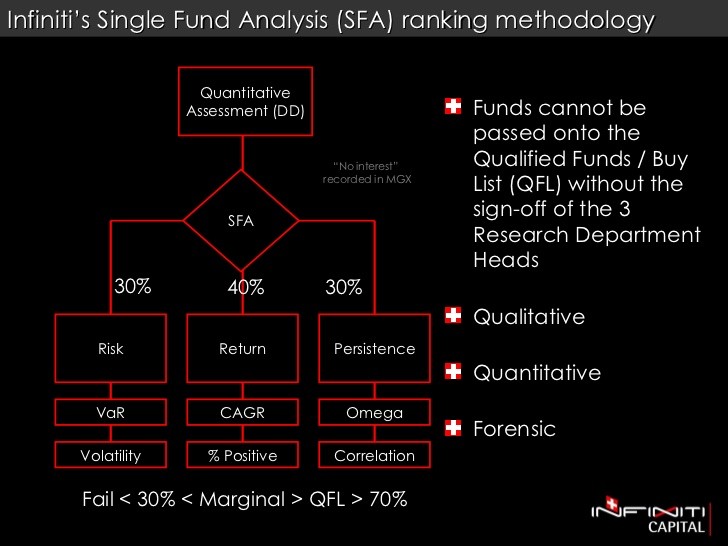Top Quantitative Hedge Funds
Post on: 17 Июль, 2015 No Comment

Overview
New Hedge Funds are being established on a daily basis (and often, it seems, are shuttered equally quickly). However, there are several prominent Quant Hedge Funds that have had a significant track record, and while longevity is no guarantee of future staying power, these firms are considered leaders in the Quant Hedge Fund space:
- D. E. Shaw
- Quantitative Management Associates
- Two Sigma
- Renaissance Technologies
- AlphaSimplex Group
- Capula
- AQR Capital
- PanAgora
- Acadian Asset Management
This list is by no means exhaustive. For example, many multi-strategy hedge funds, while not typically known as Quant Hedge Funds, have significant quantitative strategies that they run as part of their platform. Consider Highbridge Capital Management, a $29B “diversified investment platform comprising hedge funds, traditional investment management products, and credit and equity investments with longer-term holding periods.” Among other strategies, Highbridge offers Convertible Bond Arbitrage and Statistical Arbitrage funds, which are typically thought of as more quantitative strategies than some of their other product offerings, which include credit and global macro investments.
Additionally, keep in mind that firms other than Hedge Funds run quantitative trading strategies. Many large banks do, via proprietary trading divisions. However, with the implementation of the Volcker Rule. banks are limited in the types of investment activities they can engage in. As a result, many quant trading strategies have been moving and likely will continue to move from internal trading desks at the banks to banks’ asset management arms.
(NOTE: All information is taken from company websites unless otherwise indicated.)
D.E. Shaw
Founded: 1988
Based: New York City
Employees/Size: 1,100/approximately $26 billion in investment capital (as of March 1, 2012)
Description: “The firm has a significant presence in many of the worlds capital markets, investing in a wide range of companies and financial instruments within both the major industrialized nations and a number of emerging markets. Its activities range from the deployment of investment strategies based on either mathematical models or human expertise to the acquisition of existing companies and the financing or development of new ones.”
Strategies: “The firms quantitative strategies are for the most part based on:
- the use of mathematical techniques to identify profit opportunities arising from subtle anomalies affecting the prices of various securities;
- the application of proprietary models designed to measure and control various forms of risk;
- the use of quantitative techniques to minimize the transaction costs associated with the purchase and sale of securities; and
- the utilization of proprietary optimization technology to construct dynamically evolving investment portfolios based on these profit opportunities, risk factors, and transaction costs.
In the course of identifying profit opportunities, the D. E. Shaw group analyzes an enormous amount of data associated with tens of thousands of financial instruments, along with various factors not associated with any one such instrument. Data is obtained from many countries throughout the world, and covers a wide range of asset classes. When this analytical process yields a new model the firm believes to be of predictive value, it becomes eligible for deployment within one or more trading strategies, in some cases along with a dozen or more other models involving some of the same financial instruments, but arising from different market anomalies.
The firms proprietary optimization technology was designed with the objective of maximizing expected return while controlling the aggregate risk associated with a portfolio that may in some cases include simultaneous positions in several thousand securities. Rather than consider each transaction in isolation, the firms portfolio optimization software is designed to account for complex interrelationships among a large set of financial instruments that may range over a number of different asset classes. In many cases, the firms optimization algorithms are able to enhance risk-adjusted returns not only through conventional diversification, but by establishing offsetting exposures to various risk factors at the portfolio level.
Portfolios are often reoptimized on a more-or-less continuous basis, with a steady stream of trades executed to take advantage of newly emerging potential profit opportunities and/or to manage various forms of dynamically varying risk. Time-sensitive trading decisions are often made very rapidly using real-time data obtained from various sources throughout the worlds financial markets. The firm trades on nearly a 24-hour basis, and typically executes tens of thousands of transactions per day.”
Quantitative Management Associates
Founded: 1975
Based: Newark, NJ
Employees/Size: 36 investment professionals (plus additional office staff)/approximately $83 billion in assets under management (AUM) as of March 1, 2012
Description: “We see investment potential in small but widespread mispricings of securities. Active strategies can play a key role in meeting investment objectives. Asset prices occasionally deviate from values implied by underlying fundamentals, and active management can improve returns by positioning a portfolio to profit from an eventual return to fundamentals. These deviations from fair values create opportunities that our processes are designed to identify and exploit. Because these are patterns that persist over time, rather than fleeting trends, we are confident that our processes can continue to outperform over the long term.
Our bottom-up approach combines the principles of valuation theory and behavioral finance with the skill and judgment of our investment professionals. Team members— averaging 20 years of investment experience and bringing diverse perspectives, including university professors, engineers, physicists and economists – have worked smoothly together through a wide range of market conditions.
Our proprietary optimization process generates diversified portfolios across a large number of stocks. And by constraining risks such as size, sector/industry, and deviation from benchmark, while vigilantly focusing on liquidity and transactions costs, we believe we can target alpha generation more effectively.
QMAs investment approach is sensible and sound-but not static. Through ongoing research, we continue to find ways to enhance the adaptive nature of our investment processes.”
Strategies:
- Quantitative Core Equity
- Value Equity
- Equity Indexing
- Asset Allocation
- Structured Equity
Two Sigma
Founded: 2001
Based: New York (Hong Kong, Houston and London satellite offices)














